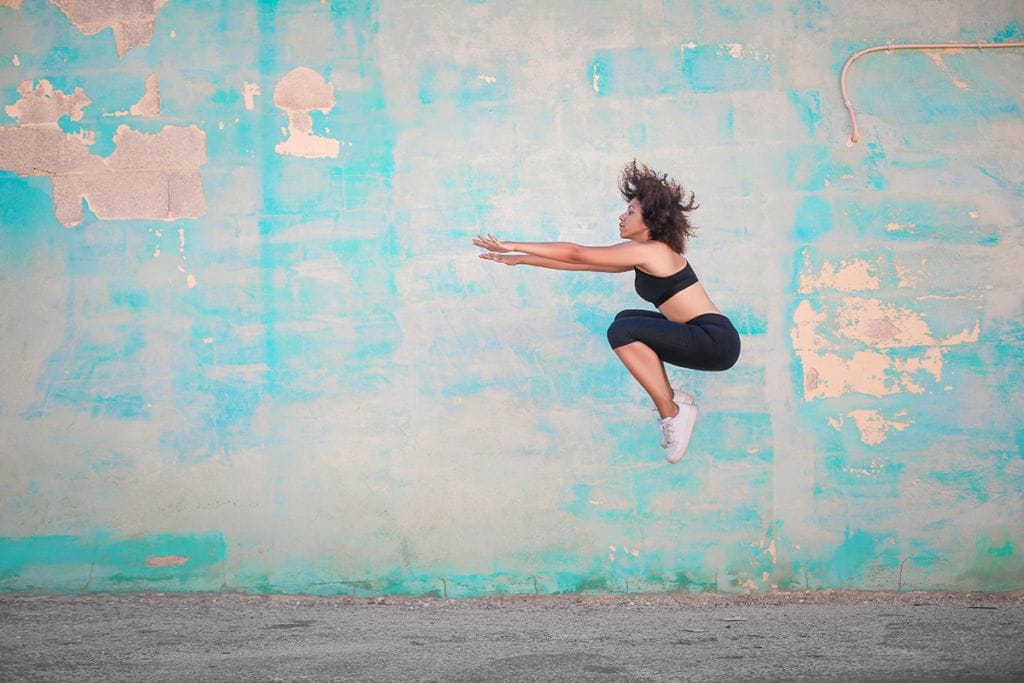The Counter-Movement Jump (CMJ) test is primarily used to measure an athlete’s explosive power and has become one of the most frequently used tests by coaches to indirectly measure power in a client’s legs. Performing the CMJ test with an arm-swing action has shown to increase performance by 10% or more.
The test begins with the client simply standing tall in place. The participant will jump as high as they can, with or without an arm swing.
The CMJ test can be measured using contact mats, force platforms, infrared platforms, accelerometers, linear position transducers, and/or video analysis. Force platforms are often considered the “gold standard” for CMJ test accuracy.
The test can also be used to measure motor performance, as it is usually a direct reflection of how fast the client can move.
The ability to produce high amounts of power is important in sports such as volleyball, basketball, soccer, and tennis. Power is also important in many other activities such as sprinting.
Clients who have explosive power with their CMJ also perform better during sprint performances, and 1-rep maxes in the back squat and clean.
Coaches can use CMJ testing with clients of all ages and abilities.
When performing the Counter-Movement jump test, as with any athletic testing, it is important to follow proper technique. For the CMJ test, the proper technique includes standing tall with shoulders back and down, bending knees and hips, and then jumping as high as possible.
Some clients may be able to reach a higher height on their jump if they swing their arms during the jump. However, when performing the CMJ without an arm swing, it’s important that the athlete keep the hands on the hips and not the legs. This protects the integrity of the test results by preventing the use of hands-on legs to generate additional force to increase the jump distance.
Once the athlete has left the ground and is suspended in the air, it is essential that the athletes maintain extension in the hip, knee, and ankle joints to prevent them from achieving any additional flight time by bending their legs.
Jump displacement is monitored during the test. It is encouraged for clients to focus on landing directly on the spot they jumped from, or they will get inconsistent results.
When a minimum of three jumps have been completed, an average score is calculated using the following equation:
Average Jump Height (cm) = (jump #1 + jump #2 + jump #3) ÷ total number of jumps.
Before you participate in (or administer) a CMJ test, there are several factors that affect the test results that should be taken into consideration:
- Individual effort – Sub-maximal efforts will result in inaccurate scores.
- Arm-swing or no arm-swing? Swinging the arms can result in higher jumps.
- Varying take-off and landing positions.
- Flexing on the ankles, knees, or hips during flight.
- Counter-Movement drop depth.
- Accuracy and reliability of the testing equipment.
The CMJ test is a great way to measure the power in a client’s lower body and can help coaches identify clients who need to focus on improving their explosive power.
At Speed Mechanics, CMJ testing is conducted in-house with a Hawkin Dynamics’ Wireless Force Platform. These force plates are a highly accurate motion analysis system that aids performance assessment and rehabilitation.

